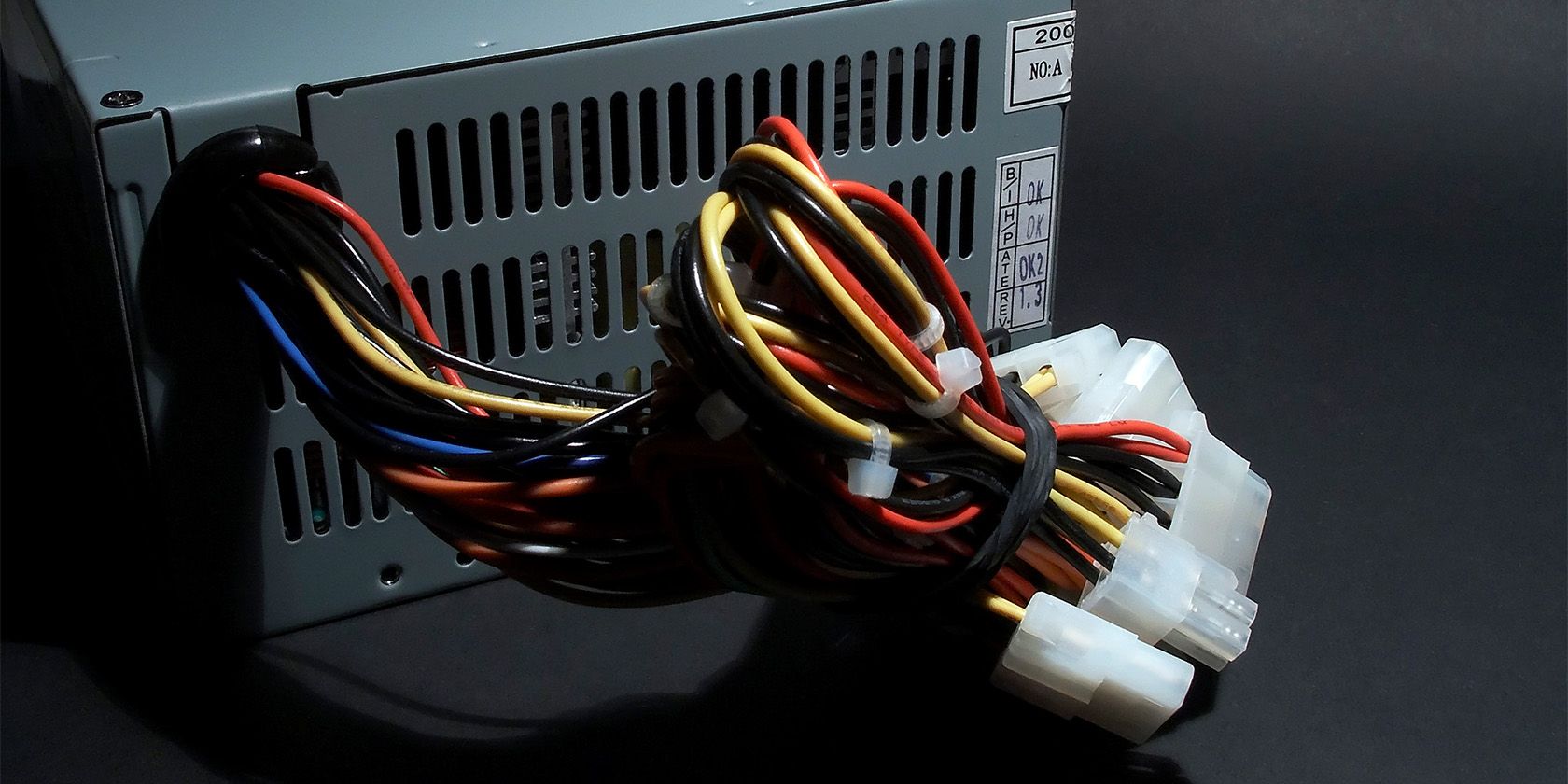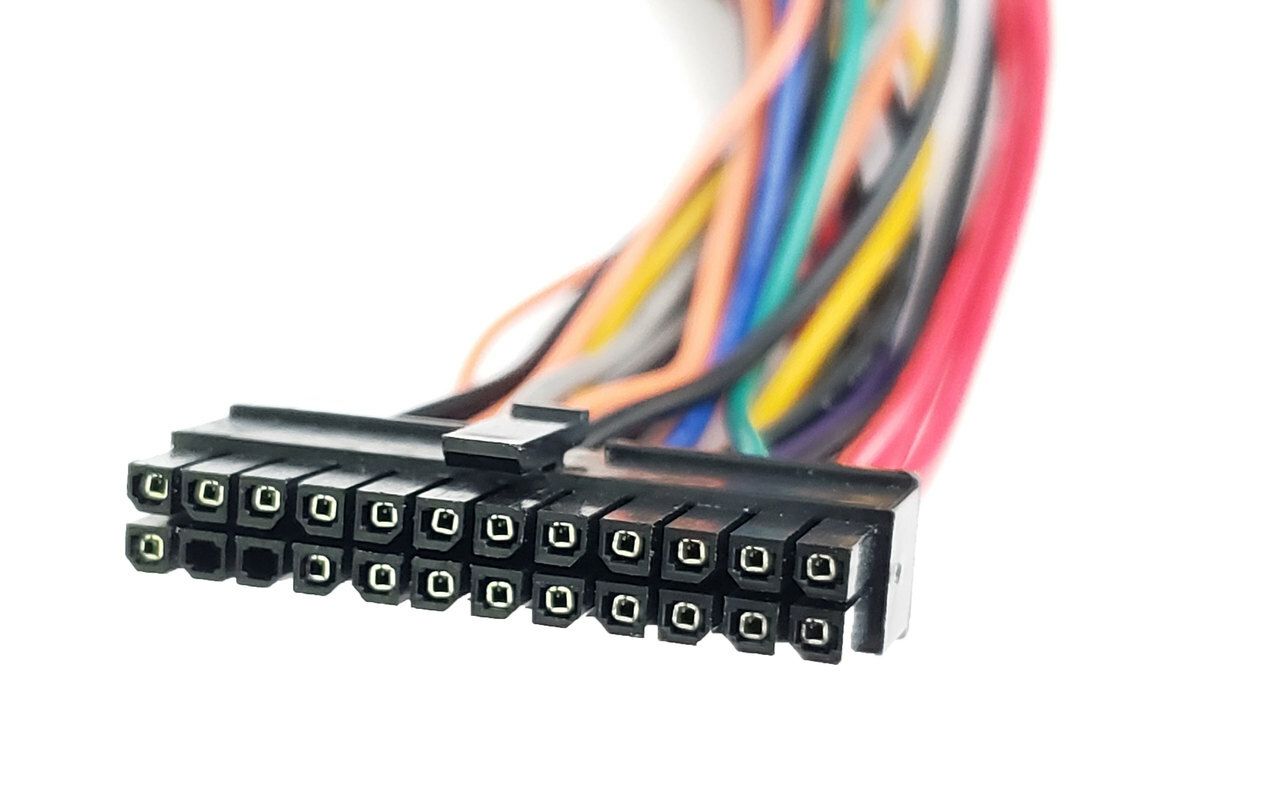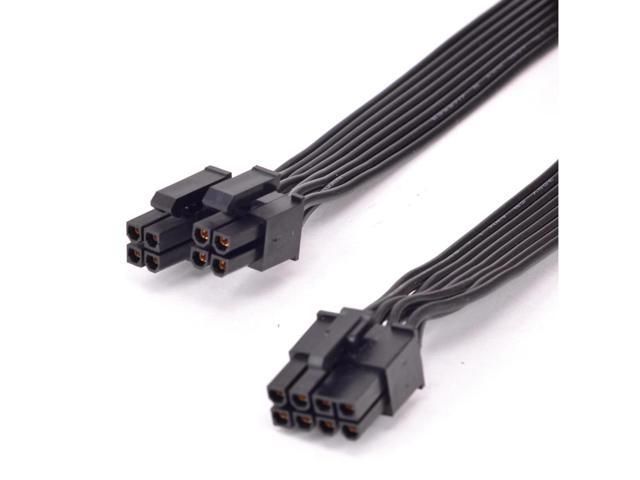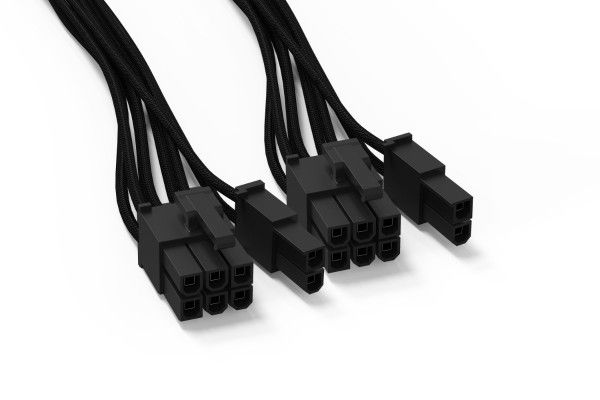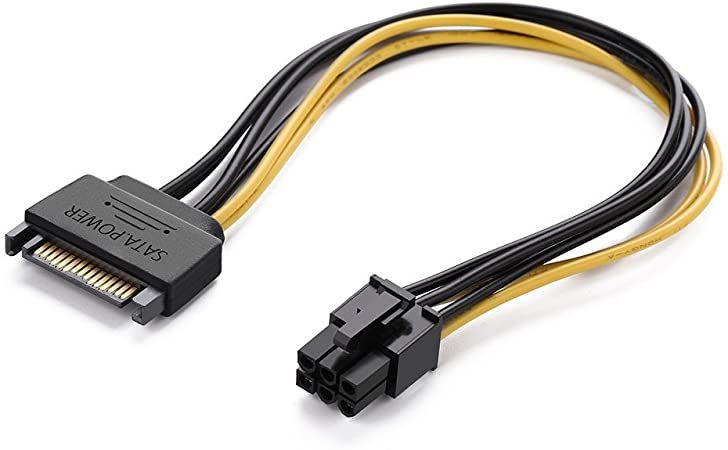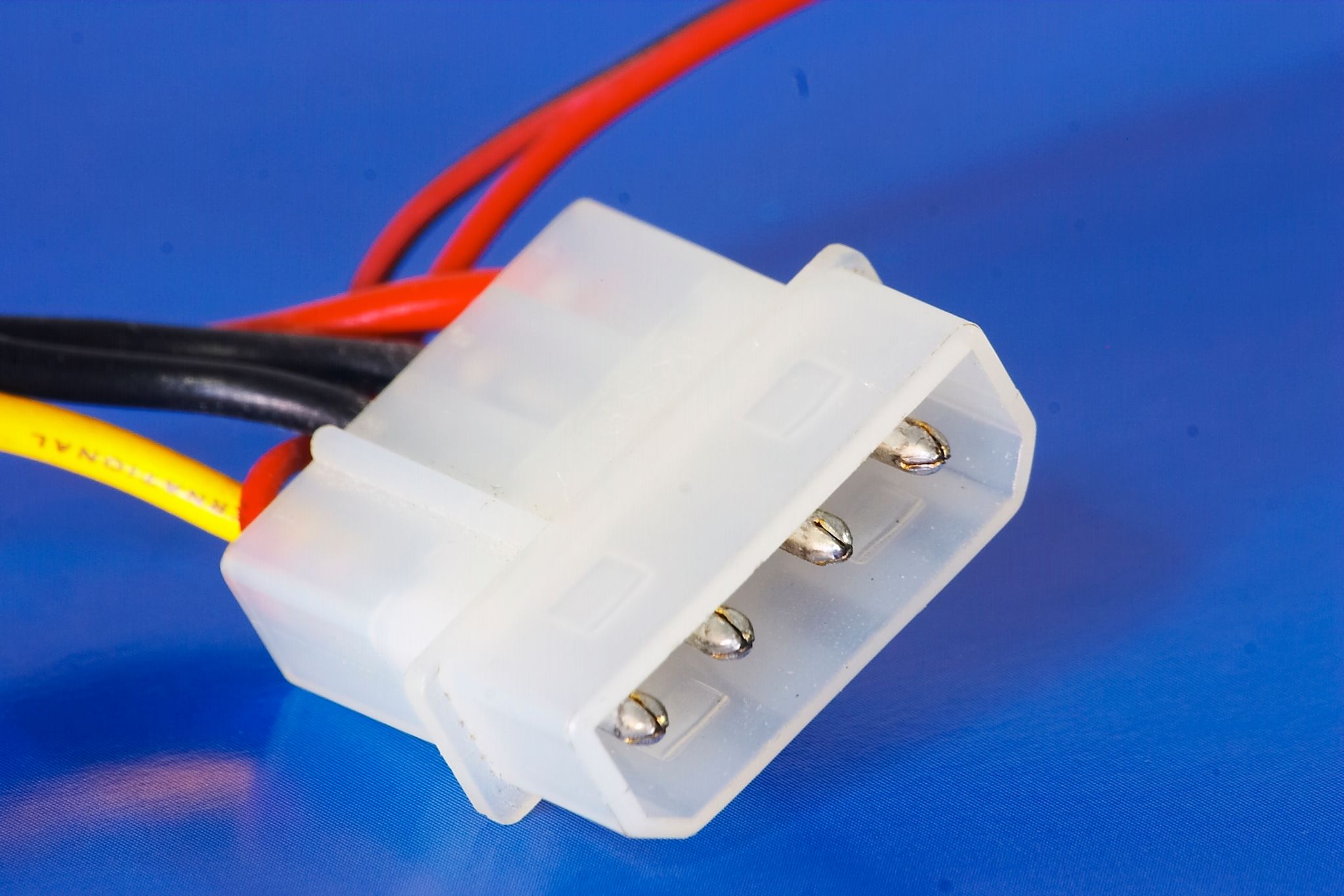So, you're building a new gaming PC. For a newcomer, it can be a daunting task. After all, there are many components, and if you don't know what you're doing, you can mess things up. As such, it's important to get acquainted with all the components inside a PC, how they work, and what goes where.
Case in point: the power supply you just unboxed and the mess of cables coming out of it. What are all of these PSU cables and connectors, and what do they do?
20/24-Pin Motherboard Cable
First, the cable that probably caught your eye the most is the wide 24-pin, whether you bought a modular or non-modular PSU. And that's actually the most important cable.
This cable is the main connector that provides power to your PC's motherboard. While it's not the only connector your PC needs (other components will require additional power, as you'll soon see), this is the main one in charge of delivering the correct voltage to your motherboard and, by extension, most of your PC's components. This includes your RAM, storage devices, PCIe devices without auxiliary power, and pretty much everything else in your motherboard.
You'll normally find this connector sitting prominently around the edge of your motherboard. In older ATX motherboards, as well as lower-end ones, you'll find that the main connector actually has 20 pins rather than 24. Likewise, some power supplies come with a 20+4 connector (with 4 pins that can be separated) instead of a straight-up 24-pin. This is because older PCs with lower power requirements can make do with 20 pins instead of 24, and power supplies have mostly stayed the same over the years (and not for lack of trying).
Power supplies are more or less compatible with older ones thanks to the ATX standard, and this has stuck around in the mind of some PSU makers. After all, old power supplies do die eventually, and when they do, the ability to use a new power supply can probably save it from ending up in a landfill.
4/8-Pin CPU Connector
Then, we have the CPU connector. The CPU is one of the few parts of your PC that needs auxiliary power on top of the power provided to your motherboard. The CPU connector is there to step in.
The CPU connector is normally found close to your PC's CPU socket. Just plug it in after you're done with your motherboard connector, and you're good to go.
Depending on the computer, you might find this connector a little different. In lower-end PCs, you'll find a 4-pin connector on your motherboard, which should be able to provide enough electricity for these lower-end chips. On mid-range and high-end CPUs, you can expect to find an 8-pin instead, giving enough power to almost every chip.
Almost always, your PC's power supply will include an 8-pin connector that breaks in two, known as a 4+4-pin. This allows it to be connected to both 4-pin and 8-pin connectors—just put one of them aside if you don't need to use it.
In some power supplies, you might find more than one CPU cable. Likewise, some motherboards might include an 8-pin and a 4-pin connector or come with a 12-pin instead. While this is not the norm, some PCs need a lot of juice for the CPU, especially for folks who are into overclocking.
6/8-Pin PCI Express Cable (GPU Cable)
Technically, all PCI Express power needs are already served by the motherboard connector. After all, if you put something like a Wi-Fi card there, it'll work perfectly. However, some devices (most commonly GPUs) need extra auxiliary power on top of what the motherboard provides. This is where PCIe cables come in. These are sometimes called GPU cables since they're mainly used by GPUs.
They'll come in both 6-pin and 8-pin flavors and connect on top of a GPU. Depending on what GPU we're talking about, you might make do with one single connector, or you might need two, or a whopping three, depending on the power requirements of the specific card. If the power requirements of a card aren't fully satisfied, users might experience performance drops or even instability and frequent crashes. Luckily, most power supplies, especially those with higher wattages, come with multiple PSU cables.
Other PSU Cables
While those are the three main cables you need to be aware of, there are some extra ones that you might or might not need depending on your use case. These are in charge of providing power to secondary components in your PC.
SATA Cable
First off, we have the SATA power cable. These are still widely included in power supplies nowadays, and if the SATA name is giving you hints as to what it's for, then your hunch is probably right. The SATA power cable is mainly in charge of providing power to a hard drive or another SATA drive directly from the hard drive. It's not to be confused with the SATA cable, which is the actual connection between your hard drive and your PC—the SATA power cable provides power, while the SATA cable provides everything else.
Lately, SATA power cables have seen other usages as well. For example, some computer cases with addressable RGB might come with a hub to connect all the leads from RGB peripherals, like fans. In that case, that RGB hub will likely be powered by a SATA power cable, even though it's not a drive. It can be used as auxiliary power for many peripherals.
Molex
Molex is largely retired these days, but there's a chance you might still see it on older or lower-end PCs. Like SATA, Molex connectors are meant to provide you with auxiliary power. Molex connectors used to be present in everything from hard drives to case fans.
Over the last decade, though, Molex has largely disappeared. The reason? It's generally regarded as an annoying connector to deal with, breaking easily and being overall unreliable. Those use cases that still need auxiliary, Molex-like power have since transitioned to SATA.
Know Your PC's Power Supply
In order to be able to build your PC the right way, it's essential for you to know what each power connector coming out of your power supply does, just like how it's important to know how efficient it is. Hopefully, with our explainer, it's pretty clear now.

